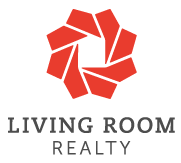

Living Room Realty

Oregon, United States
September 2013
Other professional, scientific & tech
Service with Minor Environmental Footprint
United States
Living Room Realty is a group of professional, experienced, licensed real estate agents who specialize in Portland’s inner urban neighborhoods. They offer full service representation to buyers and sellers and a full menu of relocation servicesincluding tenant placement and property management. Their expertise spans from vintage homes and historic neighborhoods to modern architecture and green building. The company’s agents are down-to-earth, experienced professionals who deliver the highest level of personalized service. Living Room agents are committed to living and doing business with meaning. Living Room Realty is dedicated to buying 100% renewable energy, choosing local, organic or recycled whenever possible. The company is also dedicated to giving back to the community. Living Room provides outreach and education for women, minorities and first time homebuyers. Their offices serve as community spaces where they host workshops, free community education, and host monthly Art shows in collaboration with local universities and Art non profits. That each person within their community and on their planet have Living Room. The room to make a fair living and sufficient income, to live a life rich in experience and the ability to occupy a home.
Overall B Impact Score
Governance 16.1
Governance evaluates a company's overall mission, engagement around its social/environmental impact, ethics, and transparency. This section also evaluates the ability of a company to protect their mission and formally consider stakeholders in decision making through their corporate structure (e.g. benefit corporation) or corporate governing documents.
What is this? A company with an Impact Business Model is intentionally designed to create a specific positive outcome for one of its stakeholders - such as workers, community, environment, or customers.
Workers 26.6
Workers evaluates a company’s contributions to its employees’ financial security, health & safety, wellness, career development, and engagement & satisfaction. In addition, this section recognizes business models designed to benefit workers, such as companies that are at least 40% owned by non-executive employees and those that have workforce development programs to support individuals with barriers to employment.
Community 55.2
Community evaluates a company’s engagement with and impact on the communities in which it operates, hires from, and sources from. Topics include diversity, equity & inclusion, economic impact, civic engagement, charitable giving, and supply chain management. In addition, this section recognizes business models that are designed to address specific community-oriented problems, such as poverty alleviation through fair trade sourcing or distribution via microenterprises, producer cooperative models, locally focused economic development, and formal charitable giving commitments.
What is this? A company with an Impact Business Model is intentionally designed to create a specific positive outcome for one of its stakeholders - such as workers, community, environment, or customers.
Environment 8.0
Environment evaluates a company’s overall environmental management practices as well as its impact on the air, climate, water, land, and biodiversity. This includes the direct impact of a company’s operations and, when applicable its supply chain and distribution channels. This section also recognizes companies with environmentally innovative production processes and those that sell products or services that have a positive environmental impact. Some examples might include products and services that create renewable energy, reduce consumption or waste, conserve land or wildlife, provide less toxic alternatives to the market, or educate people about environmental problems.
Customers 4.1
Customers evaluates a company’s stewardship of its customers through the quality of its products and services, ethical marketing, data privacy and security, and feedback channels. In addition, this section recognizes products or services that are designed to address a particular social problem for or through its customers, such as health or educational products, arts & media products, serving underserved customers/clients, and services that improve the social impact of other businesses or organizations.